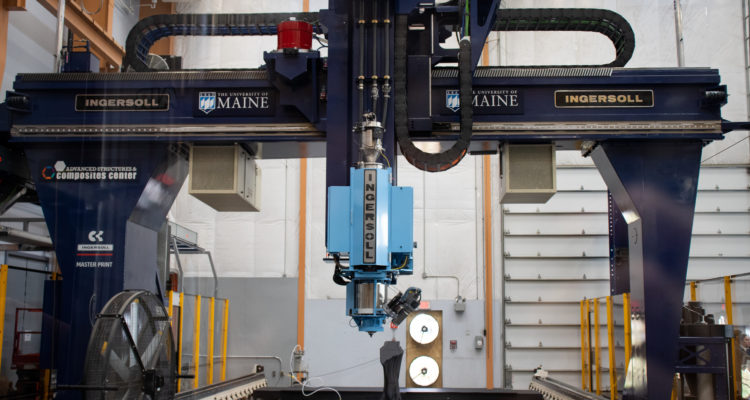The world’s largest polymer 3D printer is housed at the University of Maine’s Advanced Structures and Composites Center (ASCC). Researchers at the center are now working to use the printer to build affordable, sustainable housing.
The UMaine team, working in partnership with researchers at the U.S. Department of Energy’s Oak Ridge National Laboratory, is using wood residuals such as sawdust and construction debris to create wood flour which is bound into pellets by biopolymers for use in the 3D printing process.
The prototype weatherproof and insect-proof single housing unit, being built in collaboration with the Maine State Housing Authority (MaineHousing) at the ASCC’s “Factory of the Future,” should be ready for outdoor testing by the end of 2022. Homes will be built in sections, including walls, floors, and roofs. When production scales up, it may be possible to print a 600-square-foot house in as little as three days. The process, materials, and technology could also be used to build apartment building.


